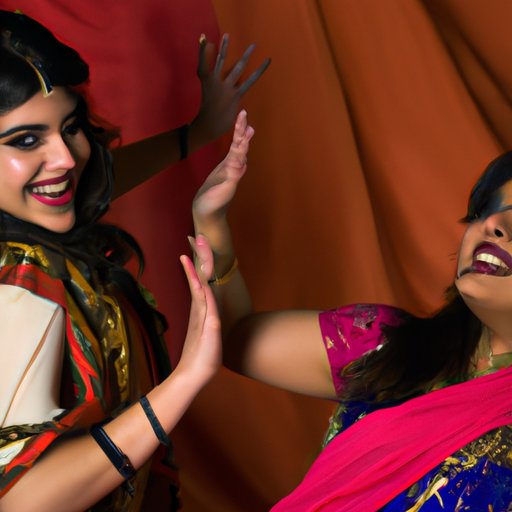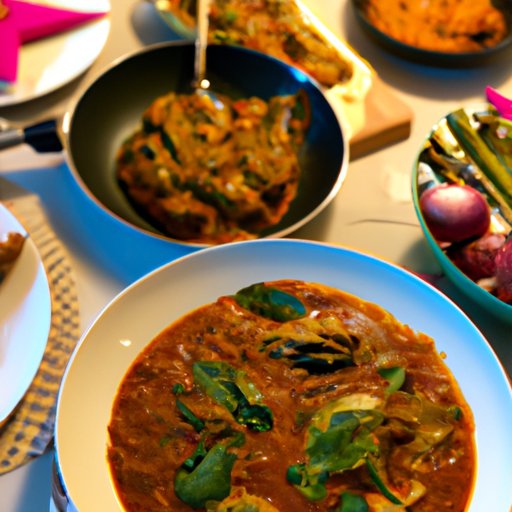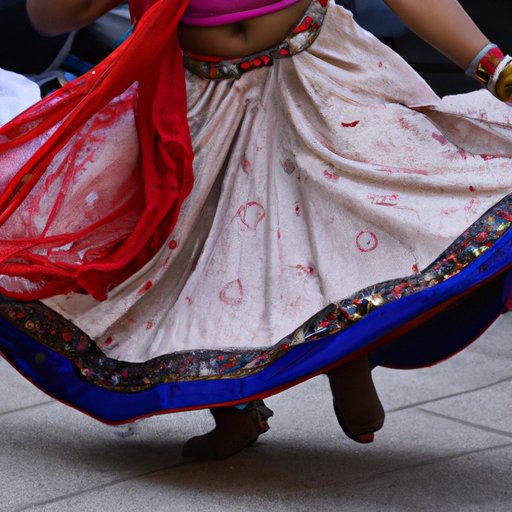Introduction
Desi is derived from the Sanskrit word ‘desh’ which means homeland or country. It refers to the culture of the South Asian countries such as India, Pakistan, Bangladesh and Sri Lanka. Desi culture is a collective term for the various cultural elements that have been passed down through generations of people living in these regions. This culture has been shaped by the customs, beliefs and values that are unique to each region.
Desi culture is often seen as an amalgamation of different cultural influences. It includes elements from Hinduism, Buddhism, Sikhism and Islam, as well as other cultural practices. It also incorporates aspects of art, literature, music, dance, cuisine and lifestyle.
In this article, we will explore Desi culture in detail. We will look at its history and traditions, the role of music and dance in Desi culture, the differences and similarities between the cultures of India, Pakistan and Bangladesh, and the traditional dishes and recipes associated with Desi cuisine.
An Overview of Desi Culture
Desi culture is deeply rooted in the ancient civilization of India. It has evolved over centuries and is still evolving today. The culture is based on the principles of peace and harmony, and it emphasizes unity in diversity.
The history of Desi culture can be traced back to the Indus Valley Civilization, which flourished around 3300 BC. This civilization was responsible for the development of many of the cultural elements that are still present in Desi culture today. These include the use of fire, the domestication of animals, the cultivation of crops, and the establishment of trade routes.
Desi culture is also heavily influenced by its religions. Hinduism is the dominant religion in India and it has had a major impact on Desi culture. Buddhism, Sikhism and Islam have also contributed to the cultural landscape. These religions have shaped the beliefs, values and customs of the people living in the region.
Desi culture is also characterized by its vibrant art, literature, music and dance. These forms of expression are highly influential in the region and have helped to shape the culture. They are seen as important sources of entertainment and education.

Exploring the Role of Music and Dance in Desi Culture
Music and dance are integral parts of Desi culture. There are numerous styles of music and dance that are popular in the region. These include classical, folk and modern forms. Each style has its own unique characteristics and they are all celebrated throughout the region.
Classical music is one of the oldest forms of music in the region. It is based on ragas, which are melodic patterns that are used to create musical compositions. Classical music is typically accompanied by instruments such as the sitar, tabla and harmonium.
Folk music is another popular form of music in the region. It is usually performed by local musicians and is often associated with specific regions or communities. Folk music is traditionally sung in regional languages and it often tells stories about the local culture and history.
Modern music is becoming increasingly popular in the region. This form of music is heavily influenced by western styles and it often combines elements of classical and folk music. It is typically performed by professional musicians and singers who bring a new energy and enthusiasm to the music.
Dance is also an important part of Desi culture. There are numerous styles of dance that are popular in the region, including Kathak, Bharatanatyam, Odissi and Manipuri. Each style of dance has its own unique movements and they are all celebrated throughout the region.
Music and dance play an important role in Desi culture. They help to express emotions, tell stories and celebrate traditions. They also provide a platform for people to come together and share their culture with one another.
A Comparison of Desi Culture Across India, Pakistan and Bangladesh
Desi culture is not uniform across the region. There are significant differences between the cultures of India, Pakistan and Bangladesh. Although there are some similarities, each country has its own unique customs, beliefs and values.
In India, Desi culture is heavily influenced by Hinduism. Hinduism is the dominant religion in the country and it has shaped many aspects of the culture. Hindu festivals such as Diwali and Holi are widely celebrated throughout the country.
In Pakistan, Desi culture is mainly influenced by Islam. Islamic festivals such as Eid al-Fitr and Eid al-Adha are widely celebrated in the country. Islamic beliefs and values have had a major impact on the culture.
In Bangladesh, Desi culture is a mix of Hinduism, Buddhism and Islam. All three religions have had a major influence on the culture. The country is known for its vibrant festivals such as Pohela Boishakh, which marks the start of the Bengali New Year.
Although there are differences between the cultures of India, Pakistan and Bangladesh, there are also many similarities. For example, music and dance are popular forms of expression in all three countries and they are all celebrated throughout the region.

Celebrating Desi Cuisine: Exploring Traditional Dishes and Recipes
Food is an important part of Desi culture. There are numerous traditional dishes and recipes that are popular in the region. These include curries, rice dishes, breads and desserts. Each dish has its own unique flavor and they are all enjoyed throughout the region.
Popular dishes in the region include biryani, dal makhani, tandoori chicken, naan and kheer. These dishes are often cooked with spices such as cumin, coriander, turmeric and chili powder. They are typically served with accompaniments such as chutney, raita and pickles.
Regional variations of popular dishes can also be found in the region. For example, in India, biryani is often cooked with saffron and cardamom, while in Pakistan it is usually cooked with cumin and cinnamon. In Bangladesh, curries are often cooked with coconut milk and mustard seeds.
Desi cuisine is celebrated throughout the region. It is a source of comfort and joy for many people and it helps to bring people together.
Conclusion
Desi culture is a vibrant and diverse culture. It is rooted in the ancient civilization of India and it has been shaped by the customs, beliefs and values of the region. Music and dance are important elements of Desi culture and they help to express emotions, tell stories and celebrate traditions. Desi cuisine is also an important part of the culture and it is celebrated throughout the region.
It is important to appreciate and celebrate Desi culture. By understanding the history and traditions of the region, we can gain a deeper appreciation for the culture and learn to respect and value its diversity. We can also contribute to preserving the culture by supporting local artists, musicians and dancers.
(Note: Is this article not meeting your expectations? Do you have knowledge or insights to share? Unlock new opportunities and expand your reach by joining our authors team. Click Registration to join us and share your expertise with our readers.)
